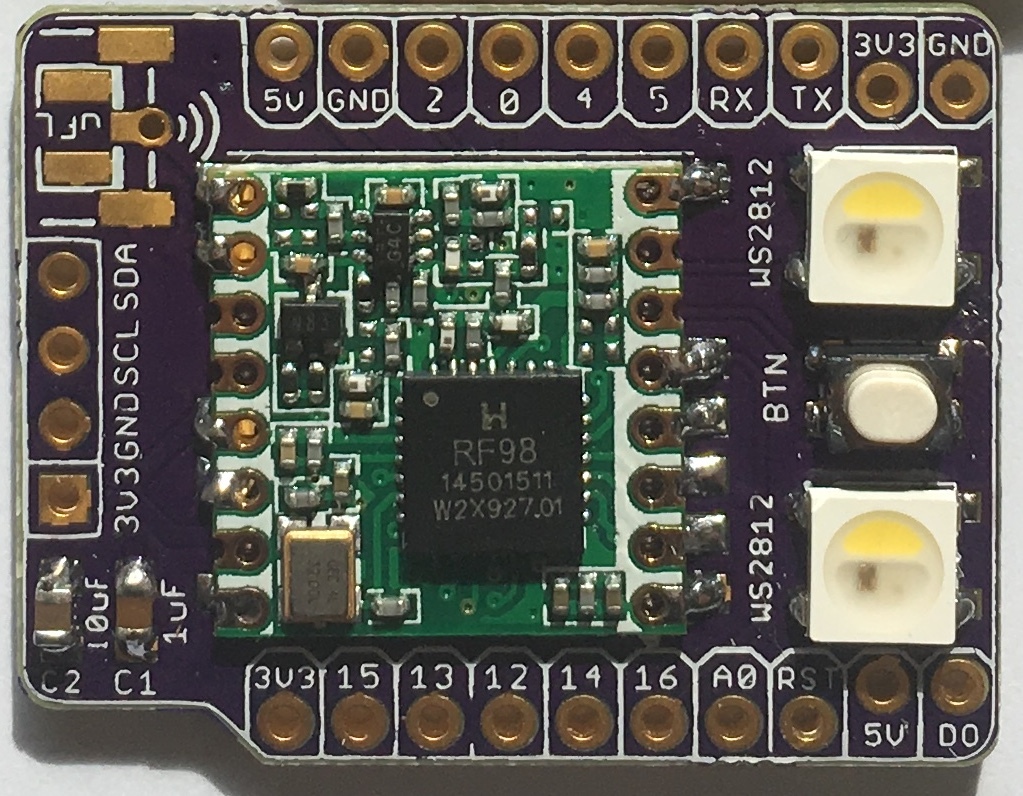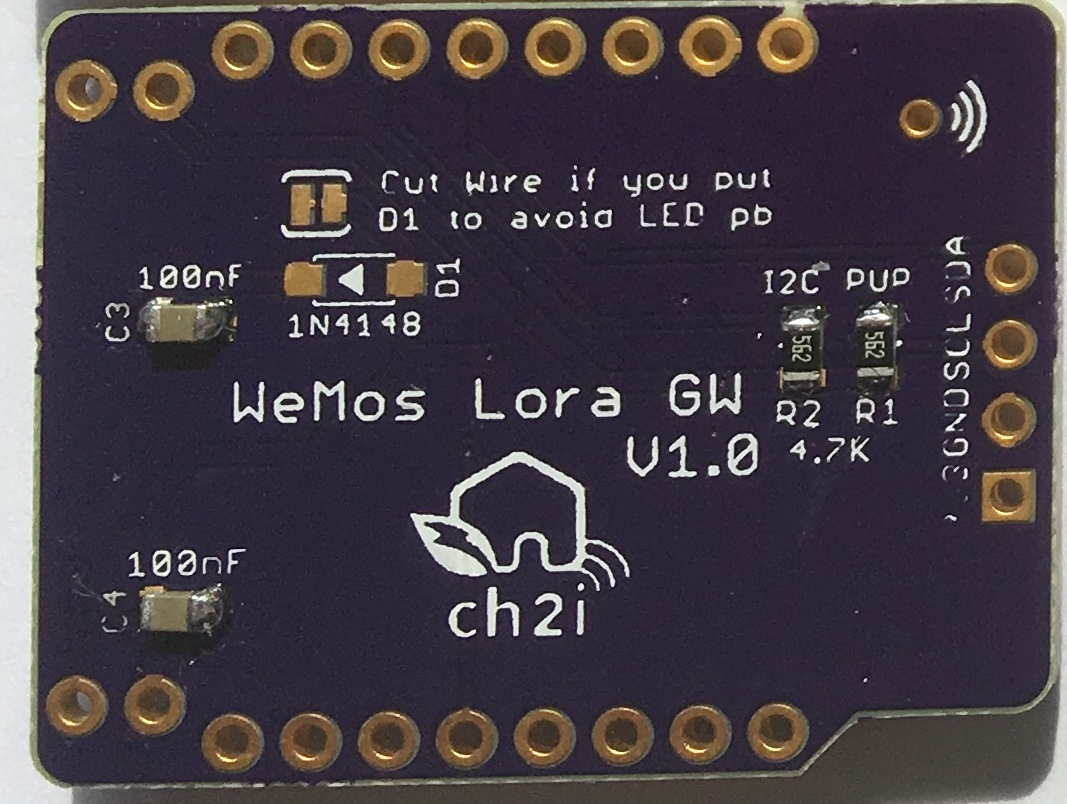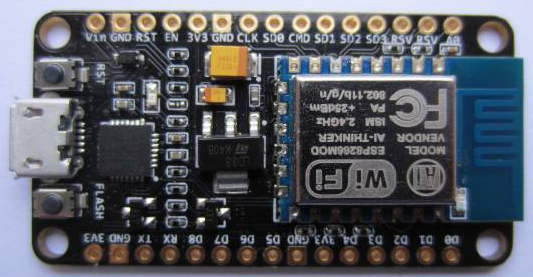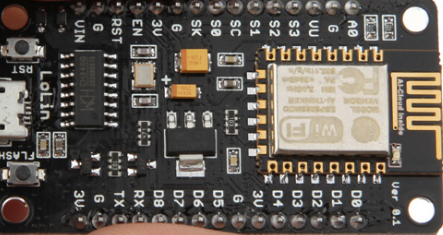OK, I have a SCGW running on an ESP8266…
My node is a Arduino with an RFM95 radio (USA), firmware is: matthijskooijman/arduino-lmic
Below is the start up sequence, it connect to /#define _TTNSERVER “40.114.249.243”
My GW shows up green on the TTN map with a EUI
I appears that my NODE is sending data.
I’m using the NwkSKey of: 2b 7e 15 16 28 ae d2 a6 ab f7 15 88 09 cf 4f 3c
The dashboard gave me a AppEUI of: 70 B3 D5 7E D0 00 03 8B
My DevEUI is: 00 04 a3 ff fe 31 00 01
My AppsKey is: 5E 93 5E B1 93 34 D0 D6 B3 80 32 E9 6C 29 9D 2A
I can login to the MQTT server…
The dashboard tell me that my device is not active…
So, I’m a bit lost here?? did I miss a step??
Its hard to debug when you have a lot of new moving parts!!
Thanks
PS: is their a way to format code on this forum??
! debug: 2
WiFi connect to: lafleur
.WiFi connected. local IP address: 192.94.167.218
Wlan Connected
Connecting to UDP
Connection successful
MAC: 18:fe:34:d3:03:c8:
SX1276 detected, starting.
Gateway ID: 0FE34FFFFD33C8, Listening at SF7 on 902.30 Mhz.
time Wednesday 17:51:26
Admin Server started on port 8080
stat update: <219> {“stat”:{“time”:“2016-6-8 17:51:27 CET",“lati”:32.9847,“long”:-117.1789,“alti”:100,“rxnb”:0,“rxok”:0,“rxfw”:0,“ackr”:0.0,“dwnb”:0,“txnb”:0,“pfrm”:“ESP8266”,“mail”:"tom@lafleur.us”,“desc”:“ESP Test Gateway”}}
sendUdp: sent 219 bytes
*** Packet RSSI: -35 RSSI: -108 SNR: 10 Length: 26
*** rxpk update: {“rxpk”:[{“tmst”:255867336,“chan”:0,“rfch”:0,“freq”:902.299987,“stat”:1,“modu”:“LORA”,“datr”:“SF7BW125”,“codr”:“4/5”,“lsnr”:10,“rssi”:-35,“size”:26,“data”:“QAYA/wMASAEBdeUVwL79mn5SiQu1MGqdZMI=”}]}
sendUdp: sent 208 bytes
Received packet of size 4 From 40.114.249.243, port 1700, Contents: 1:46:29:1:
*** Packet RSSI: -36 RSSI: -98 SNR: 10 Length: 26
*** rxpk update: {“rxpk”:[{“tmst”:3149446152,“chan”:0,“rfch”:0,“freq”:902.299987,“stat”:1,“modu”:“LORA”,“datr”:“SF7BW125”,“codr”:“4/5”,“lsnr”:10,“rssi”:-36,“size”:26,“data”:“QAYA/wMASQEBJRvxickmhILPycPLRBLLCMY=”}]}
sendUdp: sent 209 bytes
Received packet of size 4 From 40.114.249.243, port 1700, Contents: 1:4:B4:1:
stat update: <219> {“stat”:{“time”:“2016-6-8 17:51:57 CET",“lati”:32.9847,“long”:-117.1789,“alti”:100,“rxnb”:2,“rxok”:2,“rxfw”:0,“ackr”:0.0,“dwnb”:0,“txnb”:0,“pfrm”:“ESP8266”,“mail”:"tom@lafleur.us”,“desc”:“ESP Test Gateway”}}
sendUdp: sent 219 bytes
WifiServer new client
WifiServer new client
*** Packet RSSI: -37 RSSI: -108 SNR: 10 Length: 26
*** rxpk update: {“rxpk”:[{“tmst”:1748890672,“chan”:0,“rfch”:0,“freq”:902.299987,“stat”:1,“modu”:“LORA”,“datr”:“SF7BW125”,“codr”:“4/5”,“lsnr”:10,“rssi”:-37,“size”:26,“data”:“QAYA/wMASgEBRWn0cJaw4645k83vS7JCYf0=”}]}
sendUdp: sent 209 bytes
Received packet of size 4 From 40.114.249.243, port 1700, Contents: 1:68:A7:1:
stat update: <219> {“stat”:{“time”:“2016-6-8 17:52:27 CET",“lati”:32.9847,“long”:-117.1789,“alti”:100,“rxnb”:3,“rxok”:3,“rxfw”:0,“ackr”:0.0,“dwnb”:0,“txnb”:0,“pfrm”:“ESP8266”,“mail”:"tom@lafleur.us”,“desc”:“ESP Test Gateway”}}







 But it is huge! Read the specs yourself and you will see
But it is huge! Read the specs yourself and you will see 